When it comes to rare dog breeds, most people immediately think of popular breeds like the Golden Retriever or German Shepherd. However, the world of dogs is vast, and some incredible breeds remain largely unknown to the general public. These rare breeds often have unique histories, distinct physical traits, and fascinating personalities that make them truly special. Whether they were bred for hunting, herding, or companionship, each of these dogs has a story to tell. In this article, we’ll explore ten of the rarest dog breeds in the world, uncovering their origins, temperaments, and why they remain so elusive. If you’re a true dog lover, you’ll definitely want to learn about these incredible, lesser-known canine companions!
10. Azawakh – The Elegant and Loyal African Sighthound

If you’ve never heard of the Azawakh, you’re not alone! This rare and regal sighthound hails from the Sahel region of West Africa, where it was bred by the nomadic Tuareg people for speed, hunting, and unwavering loyalty. Unlike more common sighthounds like Greyhounds or Salukis, the Azawakh remained largely unknown outside its homeland for centuries, making it a true hidden gem among rare dog breeds.
With their sleek build and graceful presence, Azawakhs are sure to turn heads. But don’t let their elegance fool you—these dogs are fiercely loyal and protective. They form deep bonds with their families while maintaining an independent and dignified demeanor. Their high energy levels make them perfect for activities like sprinting and agility training, but their short coats mean they need extra care in cold weather. If you’re looking for a rare breed that’s both athletic and breathtakingly beautiful, the Azawakh is one that will definitely make you look twice
Why This Breed Is Rare Outside of West Africa
The Azawakh is a strikingly elegant and athletic sighthound that originates from the Sahel region of West Africa, particularly in countries like Mali, Niger, and Burkina Faso. This rare breed was historically bred by the Tuareg people, a nomadic tribe that valued the Azawakh for its speed, hunting ability, and unwavering loyalty. Unlike many other sighthounds that were developed in Europe or the Middle East, the Azawakh remained relatively unknown outside of Africa for centuries. Even today, this breed is rarely seen in other parts of the world, making it a true hidden gem among dog enthusiasts.
The Azawakh’s Unique Personality and Temperament
Azawakhs are known for their independent and reserved nature, but they form deep bonds with their families. Unlike many affectionate breeds that seek constant attention, the Azawakh prefers to display its love in a quiet and dignified manner. They are highly protective of their homes and loved ones, making them excellent watchdogs. While they may be wary of strangers, they are incredibly loyal to their owners. This breed requires early socialization and consistent training to ensure they grow into well-mannered and confident companions.
Exercise and Care Tips for This Athletic Dog
As a true sighthound, the Azawakh has high energy levels and requires plenty of daily exercise to stay happy and healthy. They excel in activities like lure coursing, sprinting, and agility training. A securely fenced yard is essential, as their strong prey drive may lead them to chase after small animals. Due to their short, fine coat, Azawakhs are highly sensitive to cold weather and need protection during chilly months. Their grooming needs are minimal, requiring only occasional brushing and regular nail trims.
09. Norwegian Lundehund – The Acrobatic Puffin Hunter
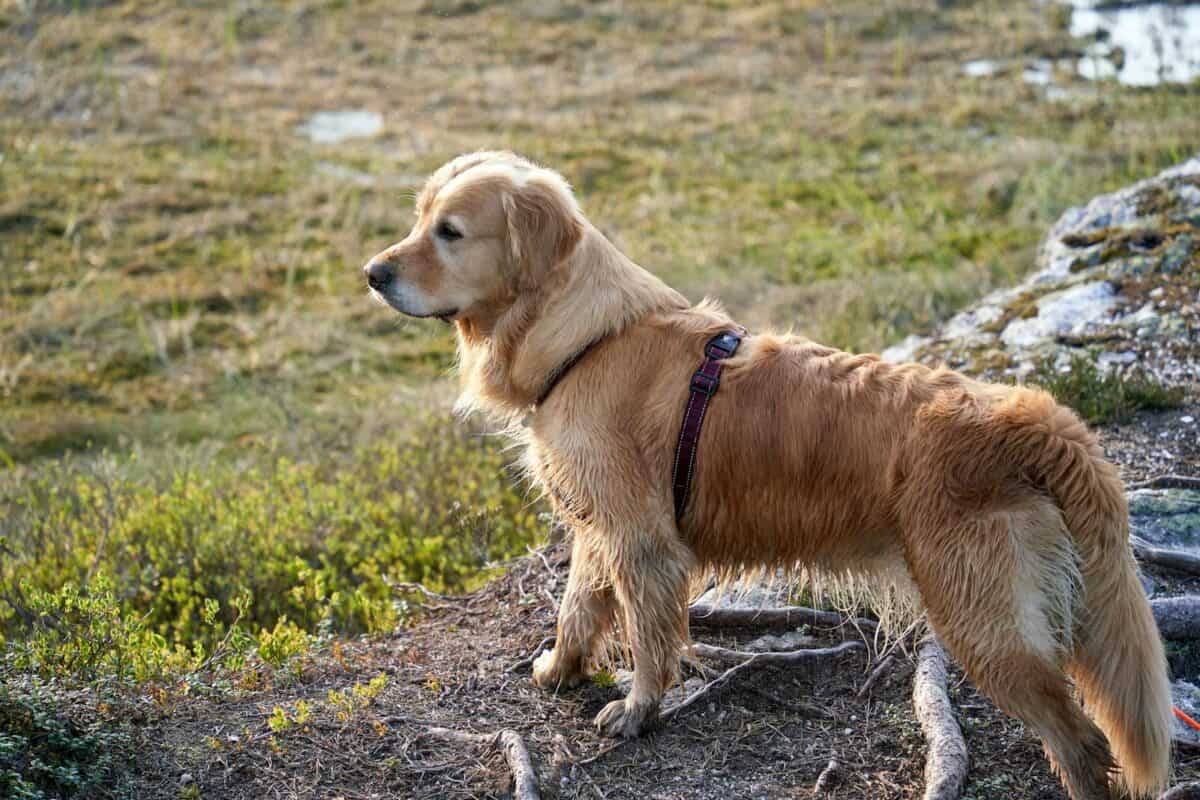
The Norwegian Lundehund – The Six-Toed Wonder
Yes, you read that right—this dog has six toes! The Norwegian Lundehund is one of the most unique and rarest dog breeds in the world, thanks to its extra toes and incredible flexibility. Originally bred to hunt puffins along Norway’s steep coastal cliffs, this agile pup developed special adaptations that allowed it to grip rocky surfaces with ease. With its ability to bend its head backward to touch its spine and close its ears to keep out debris, the Lundehund is truly unlike any other breed.
Despite its fascinating traits, the Norwegian Lundehund almost disappeared entirely. As traditional puffin hunting declined, so did the breed’s purpose, and by World War II, only a few remained. Thanks to dedicated breeders, this remarkable dog has made a comeback, but it remains one of the rarest breeds in existence today.
Training a Lundehund requires patience and creativity. These intelligent but independent dogs do best with positive reinforcement and plenty of physical and mental stimulation. Agility courses, puzzle toys, and adventurous outdoor activities are perfect ways to keep this energetic breed engaged. If you’re looking for a dog with an extraordinary history and one-of-a-kind features, the Norwegian Lundehund will definitely make you look twice!
A Dog with Six Toes? Yes, It’s True!
The Norwegian Lundehund is one of the most unique dog breeds in the world, and one of the reasons for its rarity is its unusual physical characteristics. This breed has six toes on each paw, a feature that provides exceptional grip and balance, allowing it to navigate rocky cliffs with ease. Historically, the Lundehund was bred to hunt puffins along Norway’s rugged coastline, using its flexible body and extra toes to climb steep rock faces effortlessly. This evolutionary adaptation is one of the many reasons why the Norwegian Lundehund is such a rare and fascinating breed.
Why the Lundehund Is One of the Rarest Breeds
At one point in history, the Norwegian Lundehund was on the brink of extinction. With the decline of traditional puffin hunting and changes in Norway’s ecosystem, the need for these agile hunters diminished. By World War II, only a handful of Lundehunds remained. Dedicated breeders worked tirelessly to revive the breed, but even today, it remains one of the rarest dog breeds in existence. With a population of only a few thousand worldwide, this breed is still considered a national treasure in Norway.
Training and Socialization for This Agile Canine
Lundehunds are intelligent but can be stubborn, making early training and socialization crucial. They require patient and positive reinforcement-based training methods to keep them engaged. Due to their history as hunters, they have a high energy level and need plenty of mental and physical stimulation. Agility training, puzzle toys, and frequent outdoor adventures are great ways to keep a Lundehund happy and well-behaved.
08. Thai Ridgeback – The Independent and Ancient Breed

The Thai Ridgeback isn’t just any dog—it’s one of the few breeds in the world with a natural “ridge” of hair running along its back in the opposite direction of the rest of its coat. This striking feature is shared by only two other breeds, making the Thai Ridgeback a truly unique canine. Originating from Thailand, this ancient breed was historically used for hunting and guarding, but outside of its homeland, it remains relatively rare and unfamiliar to many dog lovers.
While their looks may grab attention, Thai Ridgebacks are not a breed for beginners. Highly intelligent and independent, they require experienced owners who can provide firm, consistent training. Their strong protective instincts make them excellent guard dogs, but without proper socialization, they can be wary of strangers. These dogs aren’t always eager to please, so patience and positive reinforcement are key to successful training.
To keep a Thai Ridgeback happy, they need plenty of physical and mental stimulation. Long walks, agility training, and structured play sessions help prevent boredom and unwanted behaviors. If you’re looking for a rare breed with a bold personality and a one-of-a-kind appearance, the Thai Ridgeback is sure to turn heads wherever it goes!
How This Rare Breed Stands Out with Its Unique Ridge
The Thai Ridgeback is one of the very few breeds in the world that has a distinctive “ridge” of hair running along its back, growing in the opposite direction from the rest of the coat. This unique feature is shared by only two other breeds—the Rhodesian Ridgeback and the Phu Quoc Ridgeback. The Thai Ridgeback is an ancient breed that has existed for centuries in Thailand, where it was used for hunting and guarding. Despite its long history, it remains relatively unknown outside of its native country.
Why Thai Ridgebacks Need Experienced Owners
Thai Ridgebacks are highly intelligent, independent, and strong-willed dogs that require experienced handlers. They are naturally wary of strangers and have strong protective instincts, making them excellent guard dogs. However, their independent nature means they are not as eager to please as some other breeds. They require firm, consistent training and a confident owner who understands canine behavior. Without proper guidance, they can develop dominant tendencies and may be challenging to manage.
Training Challenges and Tips for This Intelligent Dog
Training a Thai Ridgeback requires patience, consistency, and positive reinforcement techniques. They respond best to reward-based training rather than harsh corrections. Socialization from an early age is critical to ensure they are comfortable around new people and situations. Thai Ridgebacks also need regular exercise to stay mentally and physically stimulated. Long walks, agility courses, and structured play sessions help keep them engaged and prevent boredom-related behaviors.
07. Mudi – The Energetic and Versatile Hungarian Sheepdog
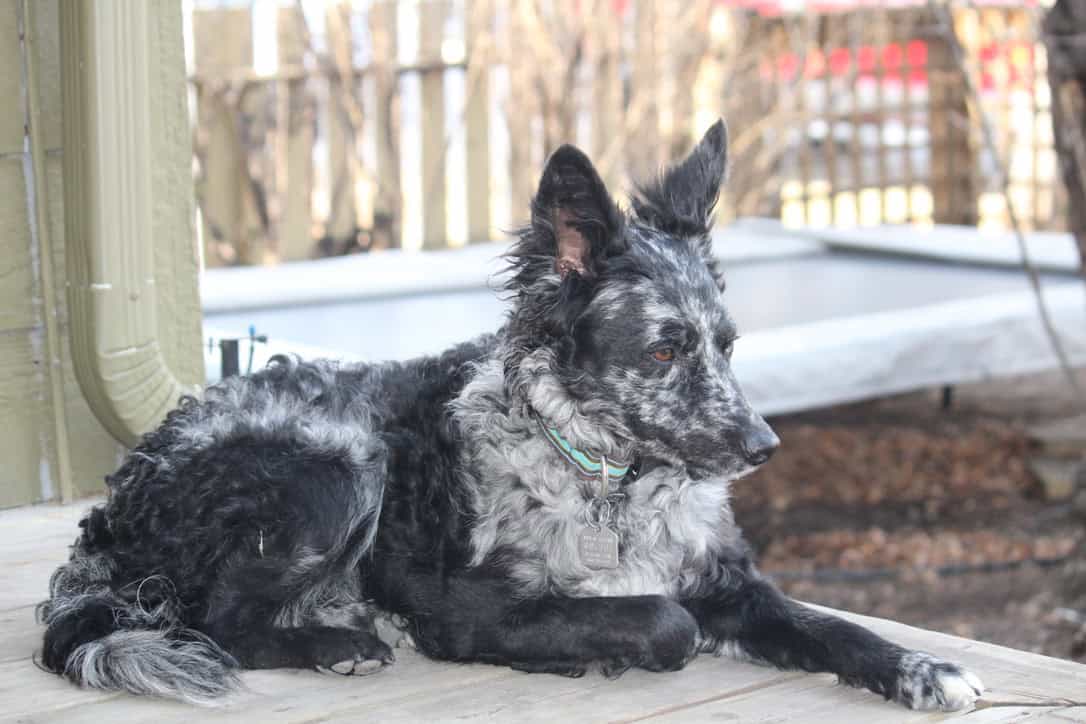
If you’ve never heard of the Mudi, you’re not alone! This incredibly intelligent and hardworking herding breed from Hungary remains one of the rarest dogs outside its homeland. Despite its sharp mind, agility, and versatility, the Mudi has stayed under the radar compared to more well-known herding breeds like the Border Collie or Australian Shepherd. But make no mistake—this “jack-of-all-trades” can do it all, excelling in herding, search-and-rescue, agility sports, and even as a loyal companion.
Mudis are natural-born herders with an independent streak. Unlike dogs that rely on constant commands, they have the ability to assess situations and make decisions on their own—a trait that makes them exceptional working dogs. However, their intelligence comes with high mental stimulation needs. Without a job to do, a Mudi can easily become restless and develop unwanted behaviors.
Training a Mudi is both rewarding and essential. They respond best to positive reinforcement techniques and thrive in activities like obedience training, agility courses, and trick work. With boundless energy, they need structured exercise, including long walks, off-leash playtime, and engaging mental challenges like scent work or puzzle toys. If you’re looking for an energetic, intelligent, and trainable companion, the rare and remarkable Mudi might just be the perfect fit!
Why the Mudi Is a Hidden Gem Among Dog Breeds
The Mudi is a highly intelligent and hardworking herding breed that originated in Hungary. Despite its remarkable agility, sharp mind, and unwavering loyalty, it remains one of the least-known breeds outside its homeland. Unlike more popular herding breeds like the Border Collie or Australian Shepherd, the Mudi has stayed relatively rare due to its small population and late recognition by international kennel clubs. This breed is often described as a “jack-of-all-trades” because of its versatility in various tasks, including herding, search-and-rescue, agility sports, and even companionship.
The Mudi’s Herding Instincts and High Intelligence
Mudis have a natural instinct to herd and control livestock, making them exceptional working dogs. Their intelligence and quick thinking allow them to adapt to different herding techniques, and they are known for being independent problem-solvers. Unlike some herding breeds that require constant commands, the Mudi is capable of assessing situations and making decisions on its own. This high intelligence, however, also means they need plenty of mental stimulation to stay happy. Without a job to do, a Mudi may become bored and develop destructive behaviors.
Best Training Methods for This Hardworking Breed
Training a Mudi requires consistency, patience, and positive reinforcement. They respond exceptionally well to reward-based training and excel in agility, obedience, and trick training. Since they have high energy levels, they thrive when given a structured routine that includes both mental and physical exercise. Daily long walks, off-leash playtime, and engaging activities like scent work or puzzle games can help keep a Mudi satisfied. With the right training and stimulation, this breed makes a loyal and highly trainable companion.
06. Lagotto Romagnolo – The Truffle Hunter with Curls
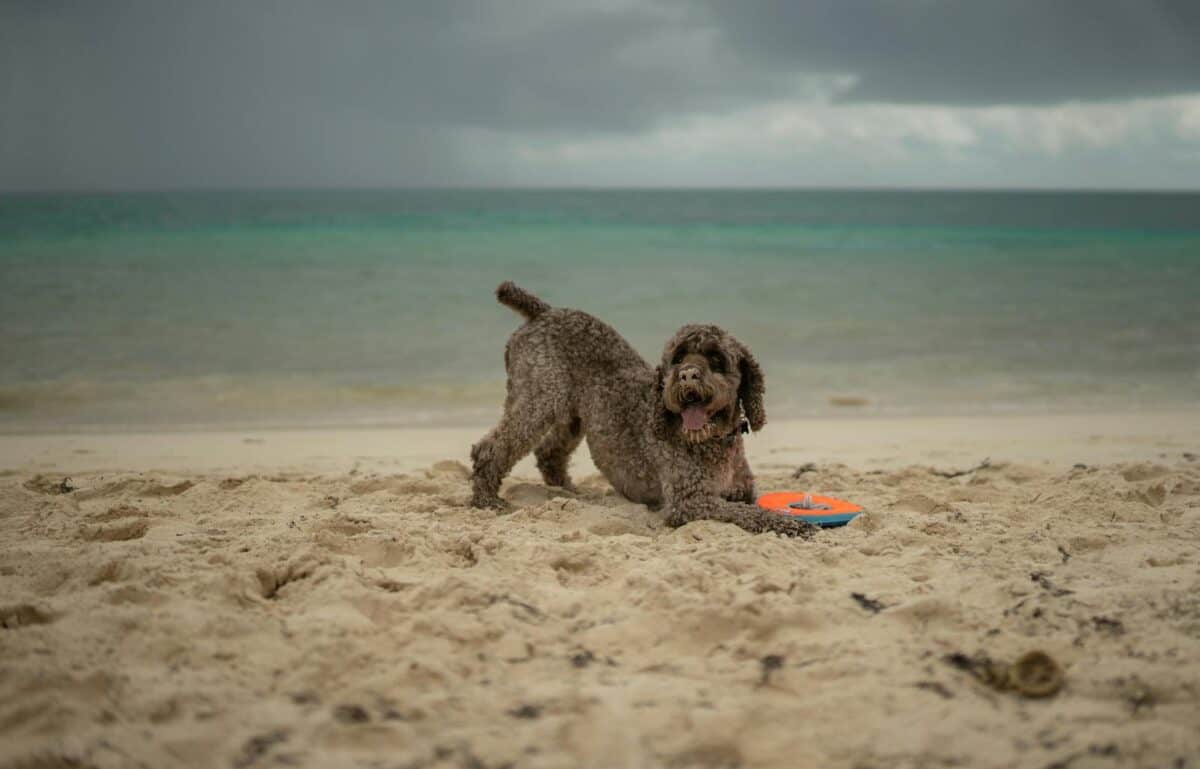
At first glance, the Lagotto Romagnolo might look like an adorable curly-coated companion, but this Italian breed is much more than a pretty face—it’s the world’s top truffle-hunting dog! With an exceptionally keen nose, the Lagotto has been used for centuries to sniff out valuable truffles buried deep underground. Unlike other breeds that specialize in hunting game or guarding, this rare breed has a nose fine-tuned to detect the unique scent of these gourmet delicacies. Even today, in the forests of Italy and France, Lagottos are considered essential partners for professional truffle hunters.
One of the standout features of the Lagotto Romagnolo is its thick, curly coat, which provides protection against harsh weather and rough terrain. While this low-shedding coat is great for allergy sufferers, it does require consistent maintenance. Regular brushing, occasional baths, and trimming every few months help prevent matting and keep their coat looking pristine. Since they are water-loving dogs, owners should also check their ears frequently to prevent infections caused by moisture buildup.
Training a Lagotto is a rewarding experience. These dogs are highly intelligent, eager to please, and quick learners, making them excel in obedience training. They respond best to positive reinforcement techniques and thrive when given a job to do. While they are naturally affectionate, early socialization is key to ensuring they grow into confident and well-behaved companions. With the right training, this rare breed makes an excellent family pet that is both loyal and hardworking!
Why This Breed Is the Best Truffle Hunter in the World
The Lagotto Romagnolo is not just a beautiful curly-coated dog—it is the world’s best truffle-hunting breed! Originating from Italy, this rare breed has been used for centuries to sniff out valuable truffles buried underground. Unlike other breeds that were bred for hunting game or guarding, the Lagotto has a uniquely developed nose that makes it a natural at detecting the distinct scent of truffles. Even today, in the forests of Italy and France, Lagottos are considered indispensable for truffle hunters, helping them find these prized delicacies that can sell for thousands of dollars per pound.
How to Care for the Lagotto’s Curly Coat
One of the most recognizable features of the Lagotto Romagnolo is its dense, curly coat, which resembles that of a Poodle. This coat serves as protection against harsh weather and rough terrain, but it also requires regular maintenance. Lagottos are a low-shedding breed, making them a great choice for allergy sufferers, but their fur can easily become matted if not properly groomed. Regular brushing, trimming every few months, and occasional baths are essential to keep their coat clean and healthy. Because they are a water-loving breed, owners should also check their ears frequently for moisture buildup to prevent infections.
Training and Socialization for This Loyal Companion
Lagottos are highly intelligent, eager to please, and quick learners, making them easy to train. They thrive on positive reinforcement training methods and enjoy having a job to do. Socialization from an early age is crucial to ensure they grow up to be confident and well-behaved around new people and animals. While they are generally friendly, they can sometimes be reserved with strangers. However, with proper training and exposure, Lagottos develop into affectionate, well-mannered companions that fit well into family life.
05. Catahoula Leopard Dog – The Colorful and Versatile Worker
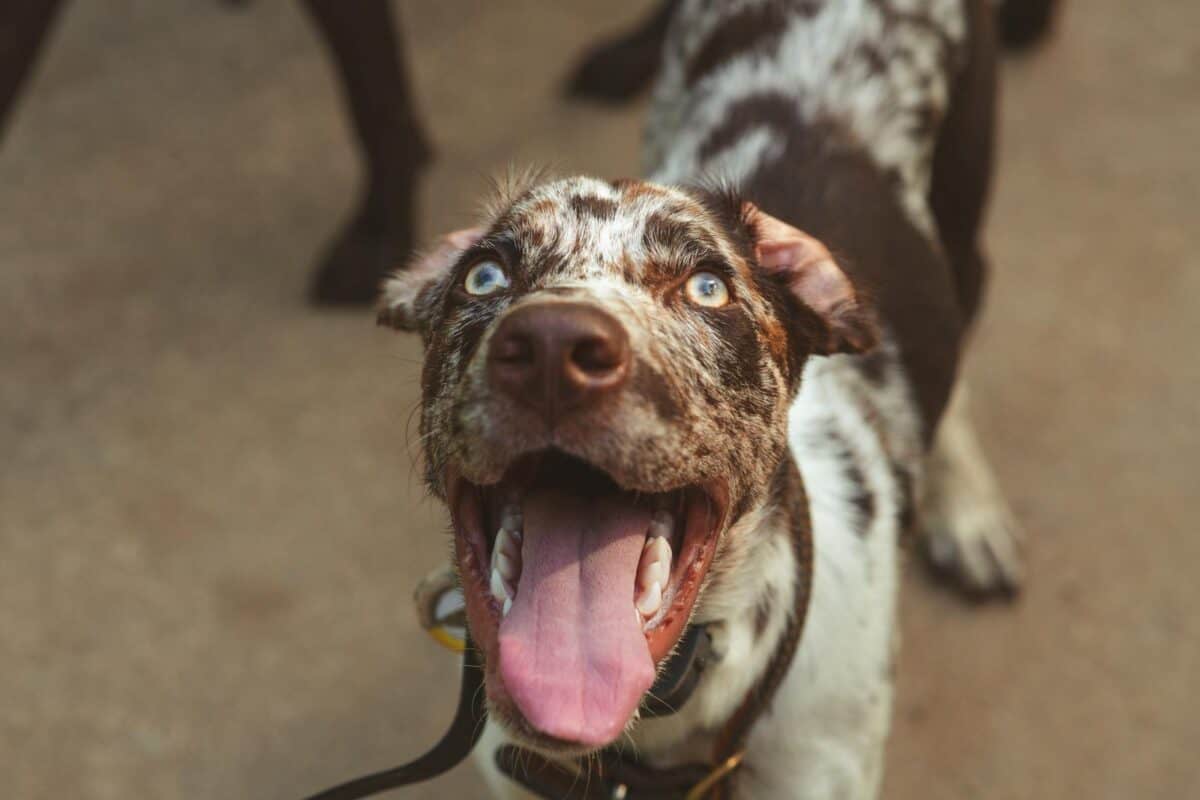
One of the most visually striking dog breeds in the world, the Catahoula Leopard Dog is famous for its unique merle coat, which gives it a leopard-like appearance. Originally bred in Louisiana, this rare breed was developed as a multi-purpose working dog, excelling in hunting wild boar and herding livestock. No two Catahoulas look exactly alike, as their coats come in a wide variety of colors and patterns. Adding to their distinct beauty, many Catahoulas have piercing blue or heterochromatic eyes, making them truly one-of-a-kind.
Beyond their looks, Catahoulas are known for their strong work ethic and boundless energy. They are intelligent, independent thinkers who were bred to make quick decisions in challenging environments. As a result, they thrive in active households where they have a job to do—whether it’s herding, tracking, or engaging in agility sports. Without sufficient exercise and mental stimulation, they may develop destructive behaviors such as digging, chewing, or excessive barking.
Training a Catahoula requires patience, consistency, and positive reinforcement. While they are highly intelligent, their independent nature can make them stubborn at times. Early socialization is crucial to help them develop a balanced temperament, as they have natural guarding instincts and may be cautious around strangers. By exposing them to various environments, people, and animals from a young age, owners can shape them into well-mannered, devoted companions. With the right training and leadership, the Catahoula Leopard Dog is an incredibly loyal and hardworking breed that stands out in both appearance and personality.
Why This Breed Has Stunning, Leopard-Like Patterns
The Catahoula Leopard Dog is one of the most visually striking breeds in the world, known for its beautiful merle coat, which creates a “leopard-like” appearance. Originating in Louisiana, this breed was developed for hunting wild boar, herding livestock, and serving as an all-purpose working dog. Their coats can come in a variety of colors and patterns, making no two Catahoulas exactly alike. Along with their striking coat, they often have mesmerizing blue or heterochromatic eyes, adding to their unique appearance.
The Catahoula’s Strong Work Ethic and Energy Levels
Catahoulas are not just beautiful—they are also incredibly strong, determined, and energetic working dogs. They were bred to be independent thinkers, capable of making quick decisions while herding cattle or tracking game. This strong work ethic means they require an active lifestyle with plenty of physical and mental challenges. Without enough exercise, a Catahoula may become restless and engage in undesirable behaviors, such as digging, chewing, or excessive barking.
How to Train and Socialize This Independent Thinker
Because of their intelligence and independence, Catahoulas require firm, consistent training from an early age. They respond best to positive reinforcement and structured training routines. Socialization is equally important, as their natural guarding instincts can make them wary of strangers. Exposing them to various environments, people, and other animals during puppyhood helps develop a well-balanced temperament. While they can be stubborn at times, with the right guidance, Catahoulas become fiercely loyal and devoted companions.
04. Peruvian Inca Orchid – The Hairless Wonder

One of the most unique and fascinating dog breeds in the world, the Peruvian Inca Orchid has a history that dates back to ancient Peru. Once treasured by Incan nobility and frequently depicted in historical artwork, this rare breed is best known for its striking hairless appearance. While some Peruvian Inca Orchids have a short coat, the hairless variety is the most iconic. Their smooth, bare skin makes them incredibly sensitive to their environment, requiring extra care, especially in extreme temperatures.
Because they lack fur, Peruvian Inca Orchids need specialized skin care to stay healthy. Their delicate skin is prone to sunburn, so they require sunscreen or protective clothing when spending time in direct sunlight. In colder weather, they may need sweaters or coats to keep them warm. Regular moisturizing helps prevent dryness and irritation, while gentle, hypoallergenic shampoos keep their skin clean without stripping away essential oils. Despite these additional care needs, they are surprisingly low-maintenance when it comes to grooming and shedding.
Peruvian Inca Orchids are affectionate and deeply loyal to their families, though they can be reserved around strangers. Early socialization is essential to ensure they grow into well-adjusted and confident companions. While they generally have a calm demeanor, they also enjoy bursts of play and activity. Their intelligence makes them highly trainable, but they respond best to gentle, positive reinforcement methods. With the right care and training, this rare breed makes a devoted and loving companion unlike any other!
Why This Ancient Breed Is So Unique
The Peruvian Inca Orchid is one of the most fascinating and rare dog breeds in the world. With roots tracing back to ancient Peru, this breed was cherished by the Incan nobility and often depicted in historical artwork. What makes this breed truly stand out is its hairless body, which gives it a striking, almost mystical appearance. While some Peruvian Inca Orchids do have a short coat, the hairless variety is the most well-known. Their smooth skin makes them incredibly sensitive to their environment, meaning they need special care, particularly in extreme temperatures.
Skin Care Tips for Hairless Dog Breeds
Because they lack fur, Peruvian Inca Orchids require extra skin care to stay healthy. Their skin is more vulnerable to sunburn, so they need sunscreen when exposed to direct sunlight for long periods. In colder climates, they may require sweaters or coats to stay warm. Regular moisturizing helps prevent dry or irritated skin, and gentle, hypoallergenic shampoos should be used to keep them clean without stripping away natural oils. Despite these extra care needs, they are relatively low-maintenance when it comes to shedding and grooming.
Understanding the Peruvian Inca Orchid’s Temperament
These dogs are known for their affectionate yet reserved nature. They form deep bonds with their owners and tend to be highly loyal. However, they can be wary of strangers, making early socialization crucial. While they are generally quiet and calm, they do have an energetic side and enjoy playtime. They thrive best in homes where they receive plenty of love and attention. Their intelligence and eagerness to please also make them highly trainable, but they require a gentle approach to avoid becoming too timid or nervous.
03. Otterhound – The Rare and Playful Water-Loving Breed

With fewer than 1,000 Otterhounds left worldwide, this rare breed is facing the risk of extinction. Originally bred in medieval England for otter hunting, Otterhounds were highly valued for their excellent swimming abilities, keen scent-tracking skills, and boundless energy. However, after otter hunting was banned, their numbers declined dramatically. Despite being affectionate, intelligent, and great family companions, Otterhounds remain rare due to their large size and high exercise requirements, which make them less suited for urban living.
True to their name, Otterhounds have an innate love for water. Their webbed feet, waterproof coat, and strong, muscular build make them exceptional swimmers. Even in homes without a hunting background, they thrive when given opportunities to swim in lakes, rivers, or even backyard pools. Their adventurous spirit also makes them excellent hiking and outdoor companions, perfect for families who enjoy an active lifestyle.
To keep an Otterhound happy and healthy, they require plenty of exercise and mental stimulation. Daily walks, swimming sessions, and engaging playtime are crucial to prevent boredom. Their thick, wiry coat needs regular brushing to prevent matting, and their floppy ears should be checked frequently for infections, especially after swimming. Despite their large size, Otterhounds are gentle, affectionate, and great family pets—provided they have enough space to roam and play.
Why This Breed Is on the Brink of Extinction
With fewer than 1,000 Otterhounds left in the world, this breed is one of the rarest. Originally bred in medieval England to hunt otters, Otterhounds were prized for their strong swimming ability, sharp scent-tracking skills, and boundless energy. However, as otter hunting was banned, the breed’s population declined drastically. Despite being loving, intelligent, and family-friendly, Otterhounds have remained rare due to their large size and high exercise needs, making them less suited for modern urban living.
The Otterhound’s Love for Swimming and Adventure
As their name suggests, Otterhounds have an innate love for water. Their webbed feet, waterproof coat, and strong build make them excellent swimmers. Even in non-hunting homes, they thrive when given access to lakes, rivers, or even kiddie pools to splash around in. Their adventurous nature means they enjoy long hikes and outdoor activities. If you love water sports or an active lifestyle, an Otterhound might be the perfect companion!
Best Ways to Keep This Breed Happy and Healthy
Otterhounds need plenty of exercise and mental stimulation to stay happy. Daily walks, swimming sessions, and interactive play are essential. Their thick, wiry coat requires regular brushing to prevent matting, and their floppy ears should be checked frequently for infections, especially after swimming. Despite their large size, they are gentle and affectionate, making them great family dogs—if you have enough space to accommodate their needs.
02. Stabyhoun – The Friendly and Intelligent Dutch Rarity
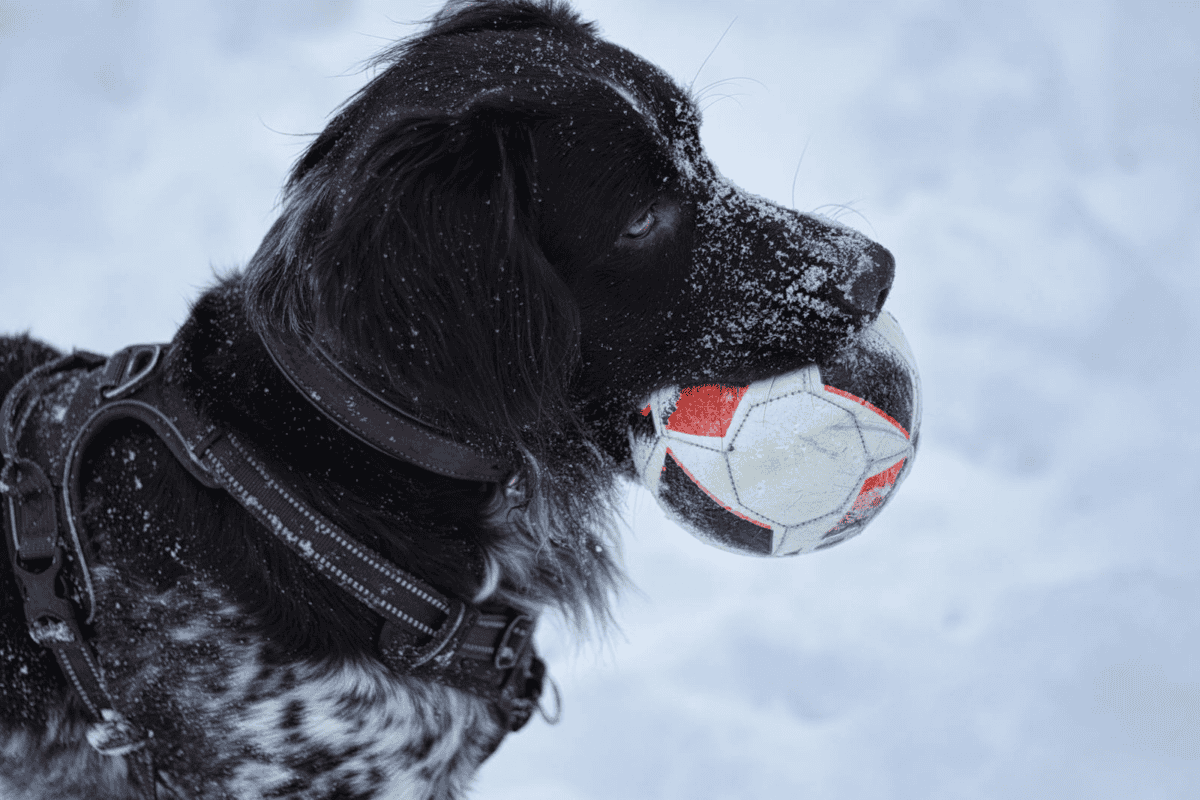
With fewer than 5,000 Stabyhouns worldwide, this rare Dutch breed remains a hidden treasure. Originating from Friesland, a northern province of the Netherlands, the Stabyhoun was traditionally used as an all-purpose hunting and farm dog. Its rarity stems from its limited geographical presence and slow population growth. However, thanks to dedicated breeders and enthusiasts, efforts are underway to preserve and promote this extraordinary breed.
One of the Stabyhoun’s most remarkable traits is its gentle and affectionate nature. These dogs are known for their patience and kindness, making them wonderful companions for families with children. Unlike some high-energy working breeds, Stabyhouns strike a perfect balance between playfulness and calmness, adapting well to family life. They are incredibly social and thrive in homes where they receive plenty of love and attention.
Training a Stabyhoun is a rewarding experience, as they are highly intelligent and eager to learn. They respond best to positive reinforcement and excel in activities like obedience, agility, and scent work. While they have moderate energy levels, regular exercise is essential to keep them happy and engaged. Their medium-length coat is relatively low-maintenance, requiring only occasional brushing. With the right care, training, and companionship, the Stabyhoun makes a loyal and loving addition to any home.
Why There Are Fewer Than 5,000 Stabyhouns in the World
The Stabyhoun, a rare breed from the Netherlands, is known for its friendly and intelligent nature. With only around 5,000 worldwide, it is one of the rarest breeds in existence. Traditionally used as a versatile hunting and farm dog, the Stabyhoun’s population remained low because it was mostly found in Friesland, a northern Dutch province. However, thanks to dedicated breeders and enthusiasts, efforts are being made to preserve and promote this remarkable breed.
The Stabyhoun’s Gentle Nature with Families
One of the most endearing qualities of the Stabyhoun is its gentle and affectionate nature. These dogs are incredibly patient, making them excellent companions for children. Unlike some working breeds that can be overly energetic or strong-willed, Stabyhouns balance playfulness with calmness, adapting well to family life. They are highly social and do best in homes where they receive plenty of attention and companionship.
Training and Care for This Unique Working Dog
Stabyhouns are highly intelligent and respond well to positive reinforcement training. They enjoy learning new tasks and excel in obedience, agility, and even scent work. Regular exercise is important, as they have a moderate energy level and enjoy outdoor activities. Their medium-length coat is easy to maintain with occasional brushing, making them a relatively low-maintenance breed in terms of grooming. With the right care and training, the Stabyhoun is a wonderful, loyal companion.
01. Chinook – America’s Rare but Loyal Sled Dog

The Chinook is a one-of-a-kind breed with a rich history as America’s rarest sled dog. Developed in the early 1900s by Arthur Treadwell Walden, the Chinook was bred for strength, endurance, and a gentle temperament. Originally used in sledding and exploration missions, these powerful yet cooperative dogs quickly earned a reputation for their reliability. However, their population dwindled over time, and even today, only a few hundred Chinooks are registered annually, making them one of the rarest breeds in the world.
Unlike Siberian Huskies or Alaskan Malamutes, Chinooks were never mass-bred for competitive sled racing. Their small gene pool and careful breeding practices have contributed to their scarcity. Additionally, their calm and affectionate nature makes them better suited for companionship rather than high-energy racing, leading to lower demand. Despite this, dedicated preservation efforts continue to keep the breed alive.
Chinooks are highly intelligent and eager to please, making them relatively easy to train with positive reinforcement methods. However, they require plenty of exercise to stay happy and healthy—activities like hiking, pulling sleds or carts, and long walks are ideal for this strong, active breed. Their thick double coat requires routine brushing to manage shedding, especially during seasonal changes. With the right care, training, and an active lifestyle, Chinooks make incredibly loyal and loving family companions.
The Fascinating History Behind the Chinook Breed
The Chinook is a truly special breed, known for its history as America’s rarest sled dog. Developed in the early 1900s by Arthur Treadwell Walden, the breed was designed to be a powerful yet gentle working dog. Originally used for sledding and exploration missions, Chinooks were prized for their endurance, strength, and cooperative nature. However, their numbers declined drastically, and even today, they remain one of the rarest dog breeds, with only a few hundred registered annually.
Why These Dogs Are So Hard to Find
Unlike more well-known sled dogs like the Siberian Husky or Alaskan Malamute, Chinooks were never mass-bred for popularity. Their small gene pool and careful breeding have contributed to their rarity. Additionally, their gentle temperament makes them more suited for companionship than for competitive racing, leading to lower demand compared to other sled breeds. Preservation efforts continue to keep this historic breed from disappearing entirely.
Exercise and Training Tips for This Strong, Loyal Pup
Chinooks are intelligent, eager to please, and thrive on teamwork. They require consistent training and respond well to positive reinforcement. Regular exercise is essential to keep them happy and healthy—whether it’s hiking, pulling sleds or carts, or simply enjoying long walks. Their thick double coat needs routine brushing to manage shedding, especially during seasonal changes. Given proper care, Chinooks make incredibly devoted family companions.
Final Thoughts
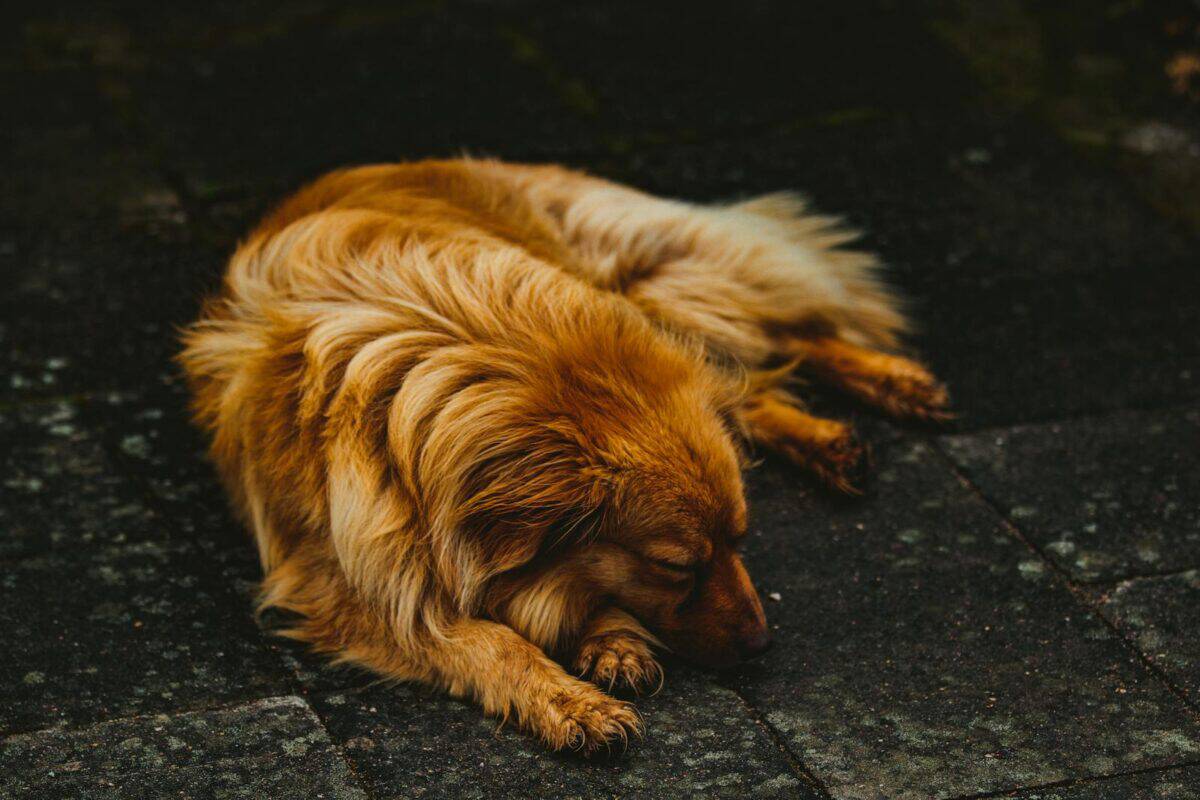
The world of rare dog breeds is fascinating, filled with history, unique characteristics, and devoted enthusiasts who work tirelessly to preserve these special companions. Whether you’re drawn to the athletic Azawakh, the intelligent Stabyhoun, or the affectionate Chinook, each of these breeds brings something unique to the world of canine companionship. While some may require extra care, training, or exercise, all of them share one thing in common—a deep, unwavering bond with their owners. If you’re considering bringing a rare breed into your home, be sure to research their specific needs and ensure you’re prepared to provide the love and care they deserve.
- 10 Dog Breeds That Look Like Wild Animals – But Make Great Pets! - August 4, 2025
- 15 Dog Breeds That Will Protect You at Any Cost - July 18, 2025
- 10 Most Expensive Pets Only the Rich Can Afford - July 16, 2025

